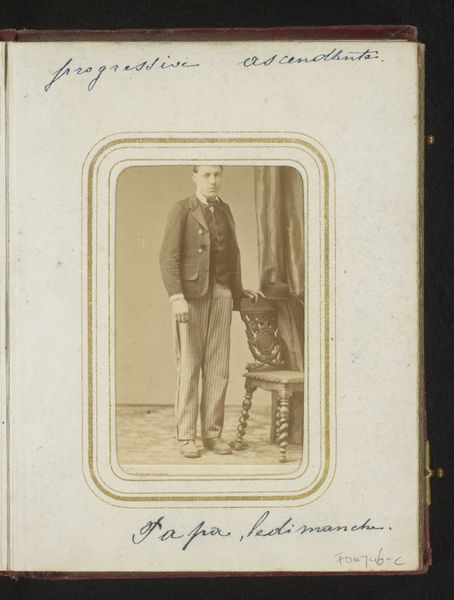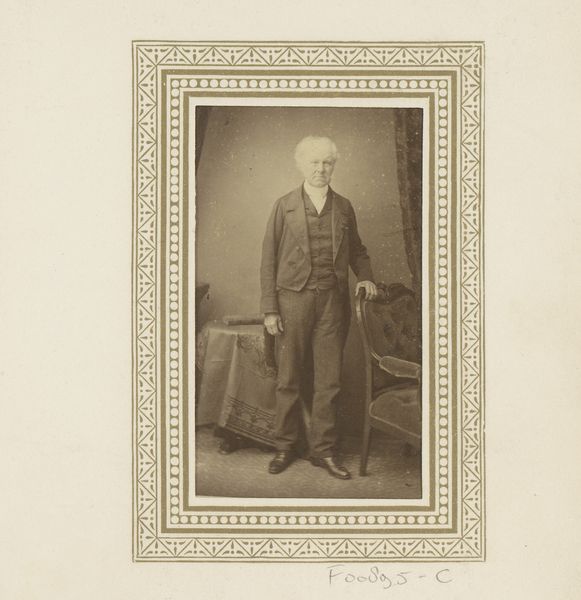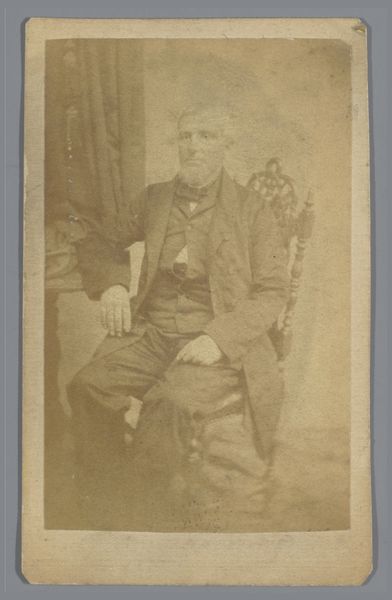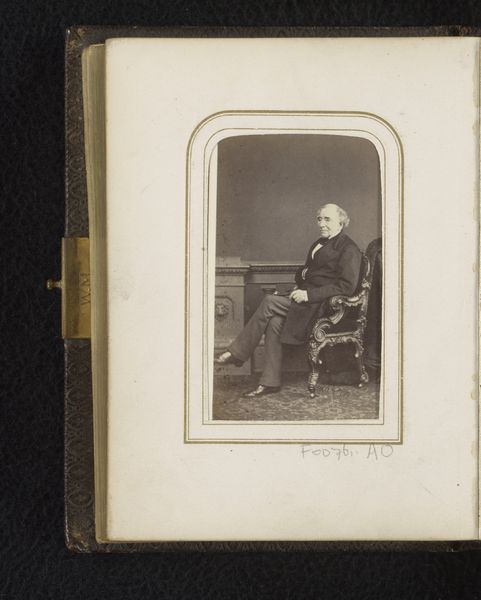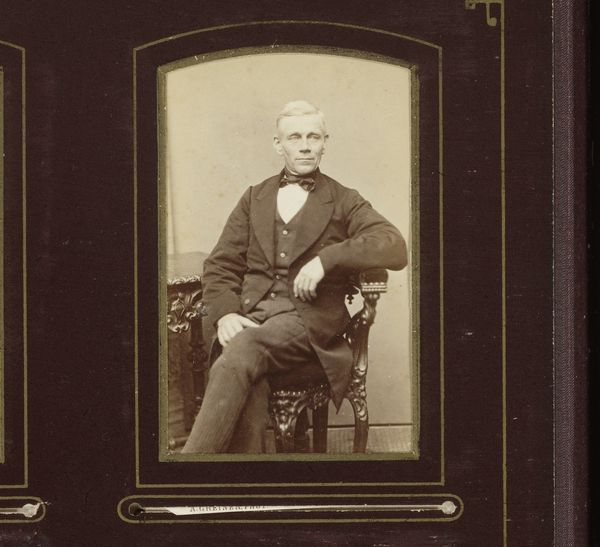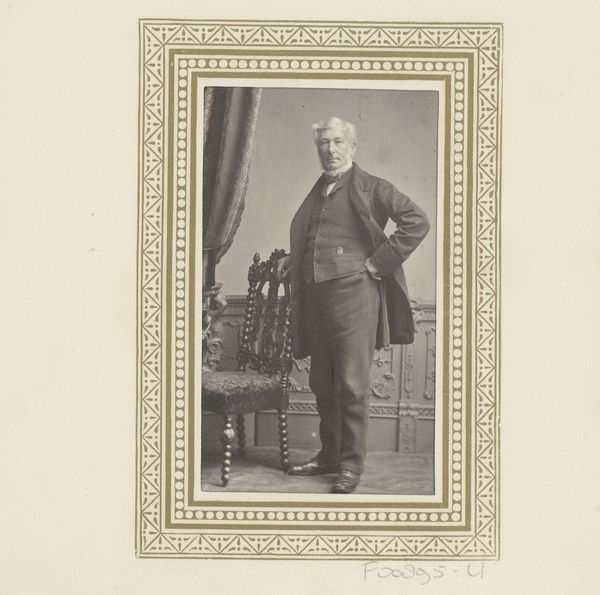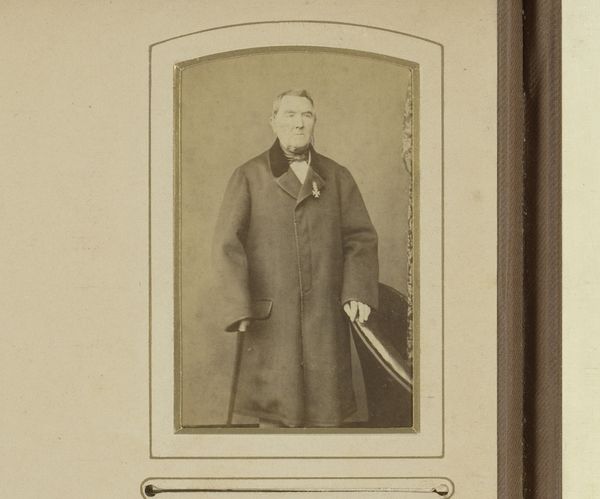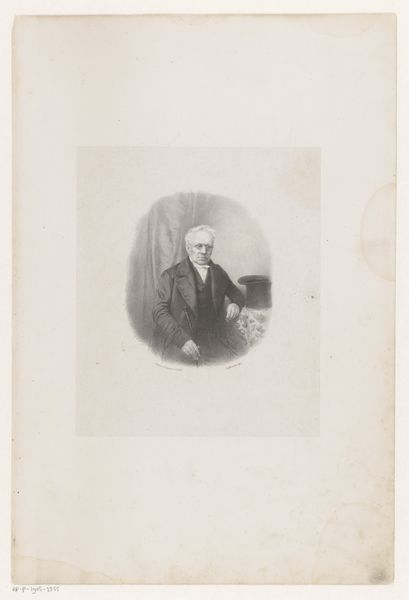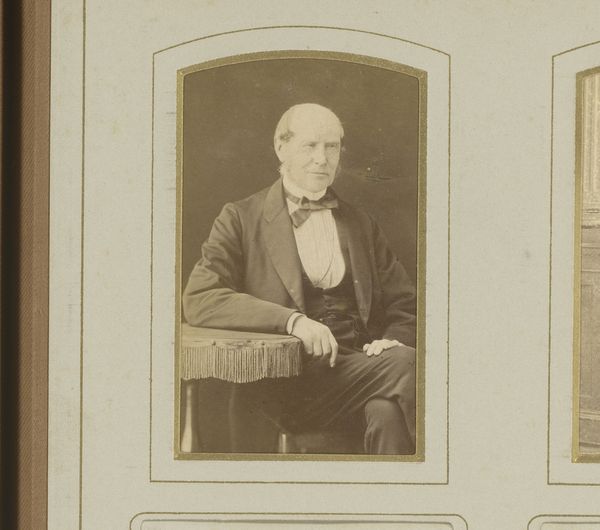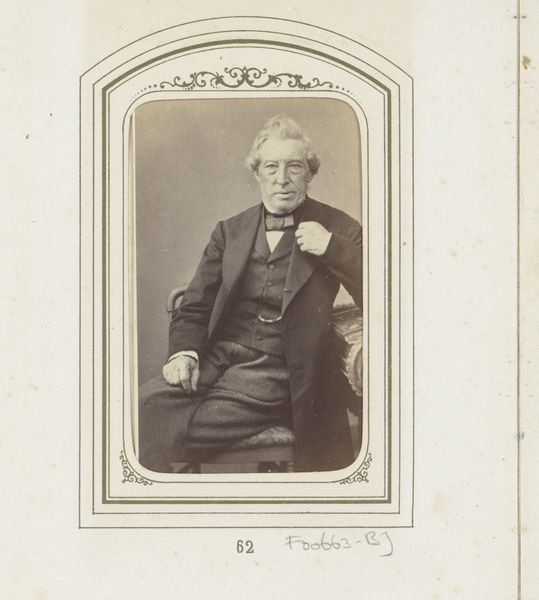
photography, albumen-print
#
portrait
#
photography
#
19th century
#
albumen-print
#
realism
Dimensions: height 80 mm, width 45 mm
Copyright: Rijks Museum: Open Domain
Editor: This is a photograph titled "Portret van Sijo Kornelis Thoden van Velzen," dating between 1899 and 1914. It's an albumen print, so an early type of photography. What really strikes me is how posed and deliberate it all feels – everything from his clothing to the chair he is seated in appears very intentional. What stands out to you? Curator: Considering its time, it’s worth emphasizing the production of an albumen print. Coating paper with egg white emulsion to capture the image… it’s labor intensive. Each stage, from preparing the chemicals to developing the print, relies heavily on skilled labor, revealing a network of people involved in its creation that transcends the single ‘artist’ credit. And note that photography, as a mass medium, altered portraiture in general as it undermined the singular importance of painted portrait commissions among wealthy people, didn’t it? Editor: So you’re saying that photography made portraiture more accessible, which then changed the art world as a whole? Curator: Precisely. Before photography became widely available, getting a portrait done required money and resources. Albumen prints democratized representation and opened it up as a vehicle for wider classes of patrons and also made mass consumption of photographic likenesses available to almost anyone, reflecting changes in how identity itself was being formed and circulated through industrial society. What else do you observe regarding materials? Editor: I suppose it’s also worth considering how easily these albumen prints could be duplicated as they become even cheaper, allowing images of someone, such as this gentleman, to be disseminated widely across society. I'm beginning to see how the technology influences both the image and its context. Curator: Exactly! Understanding its process helps contextualize it within broader shifts in labor, production, and, indeed, consumption during that period. The sitter's clothes, for instance, show not only affluence but also mass manufacture of garments – he would probably wear those clothes until they wear out. It would appear to show changes that we may take for granted today! Editor: That’s fascinating! I never thought about photography in terms of its material impact like that. I have such a greater understanding for the photo now and am wondering what it tells us about the subject. Curator: Absolutely. Remember to examine art's making and production, and then look at what art's appearance reveals about that process. You'll be surprised at the interesting discoveries.
Comments
No comments
Be the first to comment and join the conversation on the ultimate creative platform.
